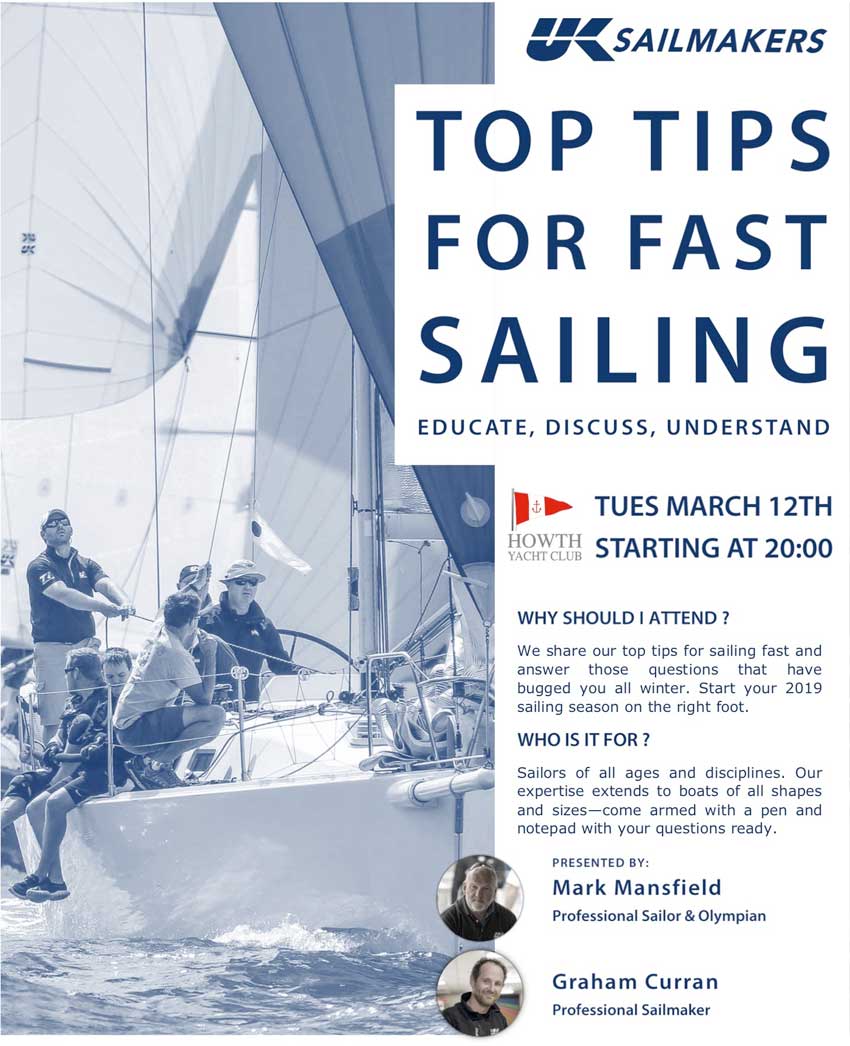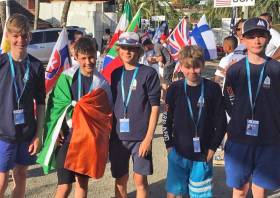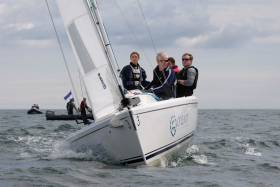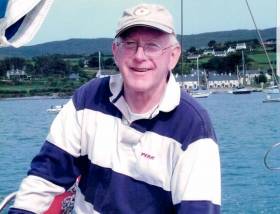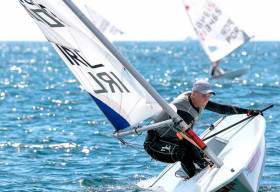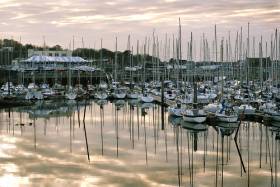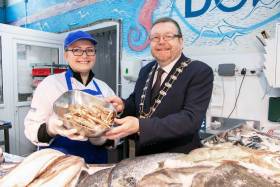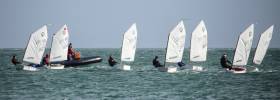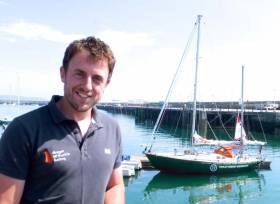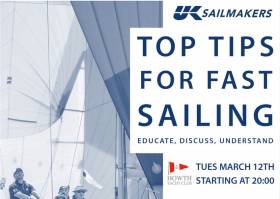Displaying items by tag: HYC
Howth Yacht Club Hosting Marina Party This Saturday
Howth Yacht Club is calling on boat owners to be ‘mini-hosts’ as part of the special marina party this coming Saturday 27 July.
The club promises “a great night” that kicks off with fireworks at 10pm and continues with guest DJs playing music from the deck of the flagship committee boat Star Point, and various parties on members’ (and visitors’) boats throughout the night.
Boat owners and crew are invited to make the most of their own individual decorations, drinks, food, lighting and music for a night of fun and hospitality aboard all boats — followed by the Disco Sunday Brunch to cure any sore heads!
There will also be prizes on the night for the best decorated boat, best party boat, best hospitality and best dressed crew.
Register your boat online if you’re joining in the fun to indicate numbers attending.
Howth’s Rocco Wright Makes Top 10 At Optimist Worlds
Howth Yacht Club’s Rocco Wright scored a tremendous result for Ireland as he placed 10th in the Optimist Worlds in Antigua earlier this week.
He was followed closely in the final standings by 13th-placed James Dwyer Matthews of the Royal Cork/Kinsale in the event won by the new three-time champion Marco Gradoni of Italy.
The rest of the Irish team are also to be commended for their finishes in a field comprising 255 young sailors: Sam Ledoux (National YC) was 70th overall, Luke Turkey (HYC) 100th and Ben O’Shaughnessy (RCYC) 159th.
In the glow of that achievement for the nation, the International Optimist Dinghy Association of Ireland (IODAI) has decamped to Waterford Harbour for the Optimist Munster Championships from today, Saturday 29 July.
The event is open to all boats of the IODAI across Regatta, Junior and Senior fleets, with the Notice of Race, Sailing Instructions and Supplementary Instructions available on the Waterford Harbour Sailing Club website.
Howth Yacht Club’s Laura Dillon is among six women profiled by the Royal Ocean Racing Club ahead of their participation in this year’s Rolex Fastnet Race.
While crew lists for August’s race are not yet finalised, at present just over 10% of those competing in the biennial voyage will be women — more than double the rate of races in the 1990s.
The RORC cites role models such as Tracy Edwards, Ellen MacArthur and Dee Caffari as a reason for this increase in female participation — but notes that opportunities for women at all levels to go sailing are increasing “too slowly”.
For 40-year-old Laura Dillon, it was a high competitive drive from a young age that saw her progress from dinghies to 1720 Sportsboats to Beneteau Firsts in both the Round Ireland and Fastnet races.
This year she swaps the helm of Harry J Heijst’s S&S 41, Winsome, for a place on the four-strong crew of Conor Fogerty’s Figaro Beneteau 3, Raw — one of only three of the new offshore class in the race.
She observes that women’s participation in the Fastnet as enjoyed a considerable step up in the last generation — but says there is a direct parallel with women’s positions in the business world, and believes it will take another generation yet before their numbers increase substantially.
The Rolex Fastnet Race website has much more on this story HERE.
RIP To Howth Yacht Club Stalwart John Leonard
Howth Yacht Club has paid tribute to long-time member John Leonard, who died last week.
Leonard sailed at HYC from the early 1980s to 2010, competing for two decades in the Cruiser III class with his Beneteau First 2, Birgitz, and later a Beneteau First 26, The Dawn Treader. He also sailed alongside the late Liam (Bill) Gallagher for three decades.
HYC.ie has Leonard’s death noice and details of funeral arrangements.
Some dazzling performances in the week’s final races saw Howth Yacht Club youth prospect Jamie McMahon sail 11 points clear of his closest rival to clinch the U21 Laser Radial title at the Laser European Championships in Porto yesterday (Saturday 25 May).
It’s been a high-achieving month for April’s Junior Sailor pick for Afloat.ie, as he and his sister Eve both qualified for the Irish Youth Sailing Team to compete at the Youth Worlds in Poland this July — the first Irish sibling pair to do so.
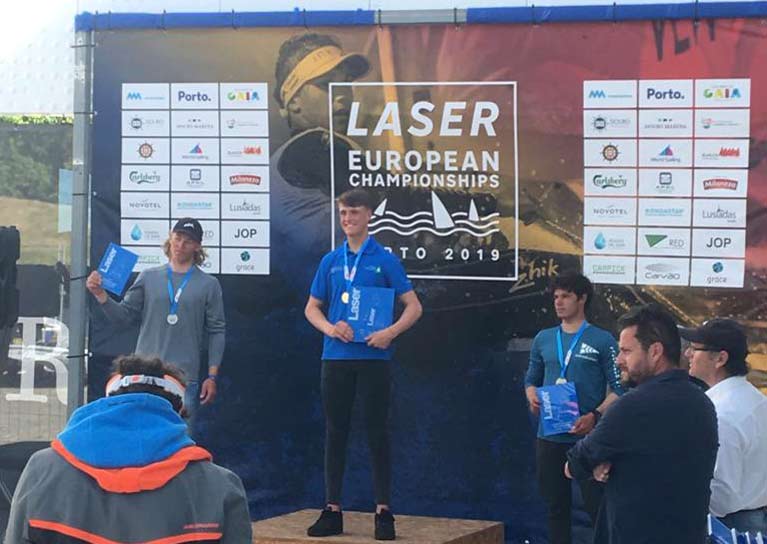 Howth's Jamie McMahon on the Laser European Championship podium in Porto Photo: Irish Sailing/Twitter
Howth's Jamie McMahon on the Laser European Championship podium in Porto Photo: Irish Sailing/Twitter
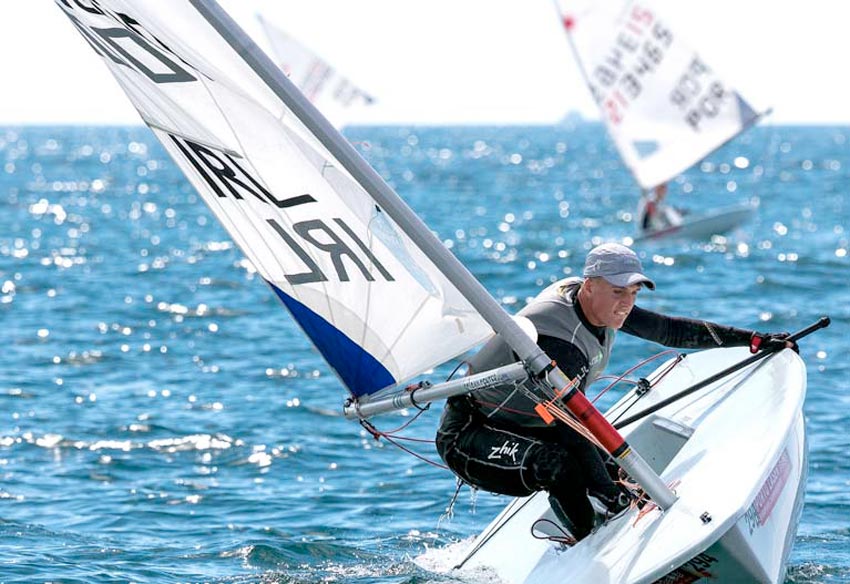 Jamie McMahon in action | Photo: Sailing Energy/World Sailing
Jamie McMahon in action | Photo: Sailing Energy/World Sailing
Elsewhere, Finn Lynch (National YC) nabbed 18th place in the senior men’s division while Ewan McMahon — Jamie and Eve’s older brother — held on to his respectable 24th position in his first senior European championship. Liam Glynn was 78th.
In other results, Aisling Keller (Lough Derg) and Aoife Hopkins (HYC) were close in the final tally at 43rd and 45th respectively in the women’s Laser Radial, while Tom Fox (HYC) placed 26th in the U21 Men’s Laser Radial.
Fun Fridays Are Back At Howth Yacht Club
The first of the season’s ‘Fun Fridays’ at Howth Yacht Club takes place this coming Friday 17 May — where the first 20 entries for junior sailors and their friends will get to spend an evening on the club’s J/80s.
Fun Fridays are back again after a successful summer last year, with HYC members getting to share their time out on the water with their families and friends.
This year’s season runs on selected Fridays up to 23 August.
With each event commencing at 6pm, there will be a broad range of activities for all ages and abilities to enjoy, ranging from supervised sailing to stand-up paddleboarding, kayaking, and even a ‘pirate trip’ to Ireland’s Eye for fun and games.
And the fun isn’t confined to on-the-water activities, either, as there will be food and drinks specials and children’s menus available in the bar.
Each event is open one week in advance, and booking is open online until by noon of the day of the event.
Fun Fridays are open to all HYC members (minimum age 6) and also to summer sailing course participants. A full programme is available HERE.
Howth Yacht Club will be one of the hubs of the new-look Dublin Bay Prawn Festival next month.
Formerly held over St Patrick’s Weekend, this year’s festival has moved to 17-19 May and is expanding to better reflect the wealth of seafood options available fresh in the North Dublin port village.
And Howth Yacht Club has announced it will be an integral part of this year’s foodie festivities, following recent discussions with Fingal County Council.
The club will be opening its bar to visitors as well as hosting entertainment on an outdoor stage on a similar but smaller scale to last year’s Wave Regatta.
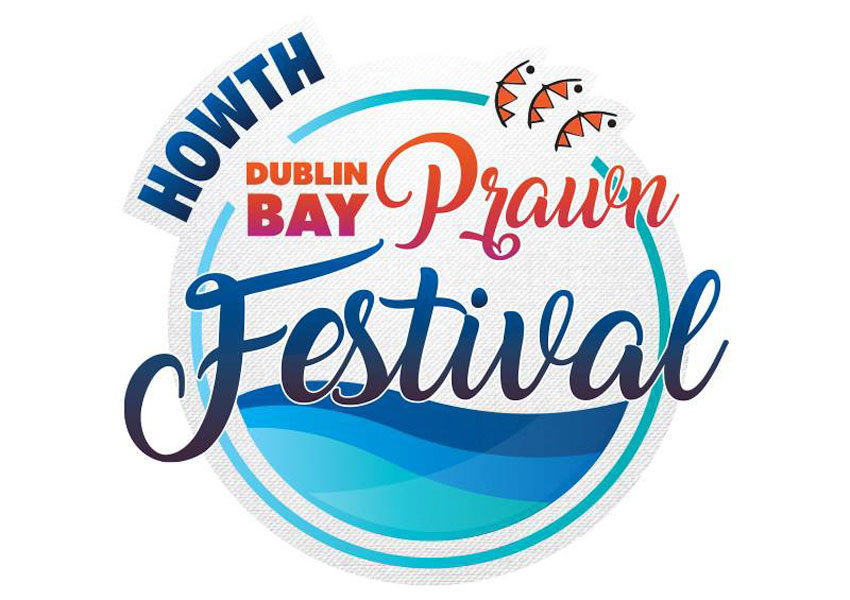
“This will be a ‘different’ event,” says HYC Commodore Ian Byrne, who adds that it “will serve the long-term interests and ambitions of the club.
“It will certainly be a very busy weekend and will help to make a great festival atmosphere.”
Byrne notes that Howth is presenting itself as ‘the Capital of Adventure’, and says HYC “will be key contributor through our dinghy and keelboat sailing experiences”.
“We hope that as many members as possible will enjoy the festival, and the organising committee would also be grateful for volunteer support,” he adds.
Howth Yacht Club’s annual Brassed Off Cup is once again being held on its traditional date of Good Friday, which falls this coming Friday 19 April.
The Optimist dinghy event is a great opportunity for junior racers to dust off their gear and get out to enjoy sailing in what’s forecast to be fine spring weather in the safe waters just north of Howth Harbour.
It will also help many sailors sharpen their skills for the trials which take place at the Royal Cork Yacht Club the following week.
Howth Yacht Club says the event has been built into a very popular and well-attended date on the Optimist sailing calendar over the past few years, with more than 60 young sailors from across Dublin expected to take part, including expected good participation from novice and regatta fleet sailors.
Three short races are planned from noon. The Notice of Race, Online Entry and Sailing Instructions are available on the HYC website HERE.
Friday will also see the prizegiving for Howth’s IceBreakers at 4.15pm after last Sunday’s race was called off due to the poor weather.
#HYC - Gregor McGuckin will be bringing his lecture on his experiences in the golden jubilee Golden Globe race to Howth Yacht Club this coming Thursday 28 March.
Last month McGuckin talked Poolbeg Yacht & Boat Club members through the eventful solo offshore race that became even more so when both he and fellow competitor Abhilash Tony were caught up in a violent Southern Ocean storm.
Both vessels were rolled and lost their masts, and Tomy was left seriously injured in his boat.
As rescuers made their way to Tomy’s position, McGuckin abandoned his race to join in the effort — no mean feat with a jury-rigged mast and a boat using 1960s-era technology.
From 8pm this Thursday evening, Howth Yacht Club members (non-members are also welcome) will hear the whole story from McGuckin himself, from the rescue drama to the fate of McGuckin’s own abandoned yacht.
UK Sailmakers Ireland agent and sailing professional/coach Mark Mansfield brings his Top Tips for Fast Sailing talk to Howth Yacht Club from 8pm tomorrow (Tuesday 12 March).
Mansfield and professional sailmaker Graham Curran will share their tips for getting the most speed out of your boat, and answer those questions that have bugged you all winter so you can start the 2019 season on even keel.
The pair’s expertise covers boats of all shapes and sizes, so sailors of all ages and disciplines are welcome — simply come with a notepad and pen, and your questions ready.
